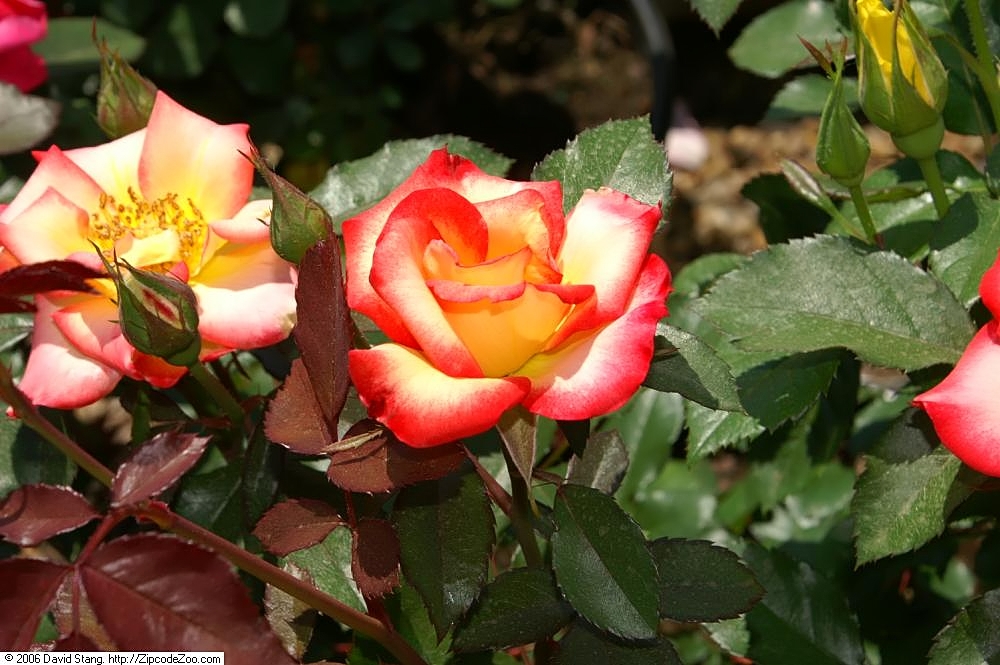
*Image Title is Konica Minolta Digital Camera but from the tags it is also named the Rosa ‘Betty Boop’ and is licensed under CC-BY-SA-4.0
I had the “Boop Oop a Doop” song stuck in my head for a few days – the one from Betty Boop. I’ve only seen the cartoon a few times, but it is certainly catchy. There is this one version on YouTube, and then I thought it would be a fun bit of audio for this assignment. Helen Kane sang the linked YouTube version, but I noticed many comments referred to an “Esther Jones.” I didn’t think too much of it then and continued my search for a song for the assignment. The search Betty Boop on Internet Archive guided my journey, and I found the results “Mae Questel, the voice of Betty Boop” and then the track “Don’t Take my Boop Oop E Doop Away.” This was the song. After retrieving the song, I thought, huh, that’s strange – Mae Questel is another name. My history teacher senses tingled, and it had been a while since I did a Wiki deep dive, so I searched for Betty Boop on Wikipedia, and sure enough – Mae Questel was a Jewish actress who played Betty Boop and Olive Oyl. So that was one name down – Who, then, was Helen Kane?
The Betty Boop Wiki explained who the other voice actresses were, and further scrolling led me to a reference about the Helen Kane Lawsuit. Helen Kane sued Fleischer Studios and Paramount in 1932 for allegedly copying her distinctive “baby” singing style to create Betty Boop. Another handy, dandy Wikipedia search later for “Baby Esther” led me to the page of Esther Lee Jones – the same Esther Jones of the YouTube comments from earlier. Baby Esther was an African American child singer and entertainer in the late 1920s known for using a distinctive “baby” or “boop-oop-a-doop” vocal style. During Helen Kane’s infringement lawsuit against Fleischer Studios over Betty Boop, evidence showed that Baby Esther had performed this style earlier and, in fact, was the inspiration for both Fleischer’s Betty Boop and Kane’s flapper persona, weakening Kane’s claim that she originated it. This testimony helped lead to the dismissal of Kane’s case in 1934.
There is little known about Esther Jones; unfortunately, there are no recordings of her songs or voice. What a piece of history that would have been—the first Betty Boop on record. But alas, we live in this timeline. And there was my little wormhole, peaking back through history over an unfamiliar topic. As for the rose pictured, Betty Boop has her own flower as well, a floribunda rose, to be specific, which was produced by rose grower Tom Carruth.
References:
Baby Esther. (2025, January 9). In Wikipedia. https://en.wikipedia.org/wiki/Baby_Esther
Betty Boop. (2025, January 19). In Wikipedia. https://en.wikipedia.org/wiki/Betty_Boop
Helen Kane. (2025, January 12). In Wikipedia. https://en.wikipedia.org/wiki/Helen_Kane
Mae Questel. (2024, December 27). In Wikipedia. https://en.wikipedia.org/wiki/Mae_Questel
Rosa ‘Betty Boop’. (2024, January 22). In Wikipedia. https://en.wikipedia.org/wiki/Rosa_%27Betty_Boop%27


Hi Breanna! I hadn’t thought about Betty Boop in a while and this was a lovely reminder. The contrast between the image and song is a fun one–the colorful image versus a song that certainly plays black and white in my mind. And a history deep dive?! I know of Esther Jones but I had no idea there was a lawsuit over the “baby” vocal story. Thank you for sharing!
Hi Breanna,
Both the image and audio are very lively due to the flower’s bright colors and the cheery Betty Boop audio. When I viewed the image on its own the image conveyed vibrant roses in a rose garden. Then I listened to the audio, it reminded me of old Betty Boop cartoons and animation from that time with the bubbly, lighthearted, peppy, and chipper song. So, when I viewed the image while listening to the audio, the meaning changed as it reminded me of the old flower animations in old cartoons where the flowers personified as being cheery, happy-go -lucky, and bubbly. In terms of other audio that could be added to this. It would be interesting to add audio clips of music from Silly Symphonies-Flowers and Trees or once the song Painting the Roses Red/March of the Cards becomes a part of the public domain that could be used to accompany this image.
Great image and audio choice, Breanna!
Hello Breanna. Interesting combination of image and audio. I know of Betty Boop, but I don’t think I’ve ever heard this song before. This media combination makes me envision Betty fending off anyone attempting to take the rose from her flower garden. However, it’s in the style of Who Framed Roger Rabbit, where she is animated and everything else is real around her. Actually, I think she had a cameo in that movie as well. It’s fun sometimes to get lost down multiple rabbit holes as you learn new things, that then lead you to learn even more new things and revelations. Thank you for sharing those findings. Another song that would work great with this image is Flight of the Bumble Bee by Nikolai Rimsky, which in public domain. Great work!